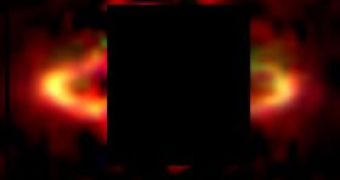Tholins are a class of molecules indispensable for life, and are derivates of simple molecules such as methane and ethane, that form through a process of ultraviolet irradiation from the Sun. Although in great abundance all over the solar system, these polymers must have existed on Earth as well during its primitive state, but are not occurring naturally now due to high affinity towards our oxygen rich atmosphere which destroys them almost as fast as they are created.
New studies related to the origins of tholins reveal that they are mostly formed in the protoplanetary disks spinning around young stars. This is the case of the HR 4796A system, the first ever discovered star-protoplanetary disk structure, located in the Centaurus constellation about 220 light years away from Earth, mostly visible from the southern regions of the planet. Upon its discovery in the early 1990s, there has been no clear evidence of other protoplanetary disks spinning around other stars.
According to current models of solar system formation, the eight million years old system should be in its final stages of the planetary formation process. Light spectroscopy analysis reveal high amounts of extremely complex organic molecules, made up mostly of organic carbon compounds called tholins, which clearly distinguishes it from other substance which emit light in the close to red spectrum such as iron oxide, for example.
Light spectroscopy techniques involve studying light filtered through different materials, in order to determine substances composing the respective structures, and although it has been used in numerous studies and experiments over the years, the Carnegie Institution's Department of Terrestrial Magnetism found how hard this method can be, while studying light dispersed through a protoplanetary disk.
In our solar system, tholins are scattered in every direction and are usualy being detected in comets, asteroids, centaurs, moons, thus scientists believe such objects are responsible for seeding planets with organic molecules in order to provide with the building blocks for life during cosmic collisions.
The detection of tholins outside the solar system, implies that life might just be a property of the universe and is spread throughout it. HR 4796A represents a pre-main sequence star, about two times the mass of our Sun, more than twenty times brighter and two times hotter.

 14 DAY TRIAL //
14 DAY TRIAL //